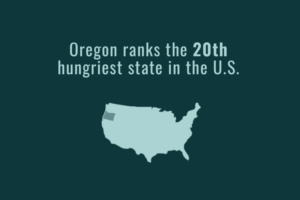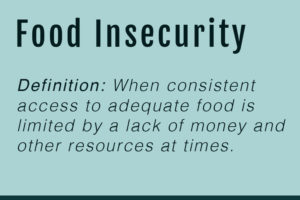Feeding America, Map the Meal Gap, 2016.
Housing and Urban Development, The 2016 Annual Homeless Assessment Report (AHAR) to Congress, 2017.
Oregon Department of Education, CNP Statistics, 2016-17.
U.S. Census American Fact Finder and American Community Survey, Poverty: 2015, 2016, and 2017.
U.S. Department of Agriculture Economic Research Service, Food Security in the U.S., 2017.








